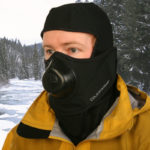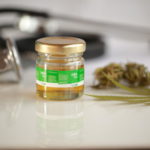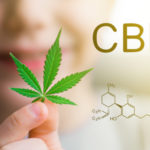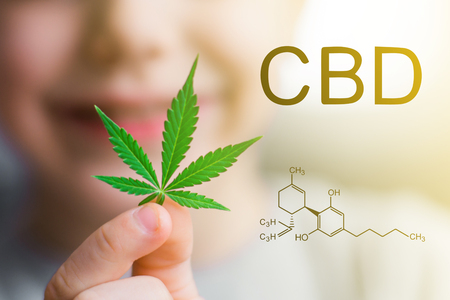Cannabis is the most widely used “recreational drug” in the U.S., perhaps the world, excepting for alcohol. It has been a subject of focus in light pop culture and the drug wars since the 1960s. Currently 26 states have legalized the growth of marijuana and manage the sale of it although it is still illegal under federal law. Despite the typical ‘high’ obtained from it, valuable insight has been growing about the benefits of personal health from one of its extracts: Cannabidiol (CBD).
In the 1930s, big industry lobbied the government to outlaw hemp in any form because it directly threatened their long-established business models with its extremely-efficient applications in paper, textiles, biodegradable plastics, paint, biofuel, agriculture, and animal feed, building materials including insulation, and medication among others. As a matter of fact, hemp produces four times the fiber per acre as trees. Let’s take a look at this remarkable substance.
What is cannabis?
Cannabis is a genus of flowering plant with three subspecies: Cannabis Indica, Cannabis Sativa, and Cannabis Ruderalis. Generally, the first two species are referred to as Marijuana and have been through the years to have higher concentrations of Tetrahydrocannabinol (THC). This is the cannabinoid that produces the ‘high’ when consumed. The third species, Cannabis Ruderalis, is a small wild weed that has low levels of any cannabinoids. The has been generally referred to as hemp although, this is not technically correct.
Hemp refers to members of a subspecies of sativa that have less than 0.3% THC because this level of THC is the defining characteristic. However, it can have a high concentration of CBD which inhibits the effect of THC on receptors in the brain. It is THC that makes one ‘high’ not CBD. The word Hemp is only used for Cannabis plants and products that have no meaningful amount of THC, or in other words, hemp will not get you high. Some governments even regulate the use of this word. When hemp was first outlawed in about 1937, it was because those who farmed it and farm hands were supposedly getting high on it according to the government. However, hemp is notable primarily because it consists of a fibrous material that is stronger and cheaper to produce than cotton, has greater insulation properties than fiberglass, more tensile strength than steel cables, and can grow in nearly any non-arctic environment. Therefore, hemp became legal to grow again during WWII because the U.S. Navy needed it for ropes for ships. After the war, it again became illegal to grow.
What are cannabinoids?
Cannabinoids are chemicals found within the Cannabis plant that have some sort of effect on the endocannabinoid system found in all mammals; yes, that includes humans. Endocannabinoid simply means “cannabinoid inside” your body. We all produce cannabinoids and have an innate system that responds to them. We discover more daily about the human cannabinoid system, particularly in the central nervous system, digestive system, and immune system. Currently, scientists have discovered 113 different cannabinoids, which is expected to increase. Along with this has been the discovery of two different kinds of receptors and an indeterminate number of functions they serve. Tetrahydrocannabinol has many effects on the body in addition to producing a high it has strong anti-inflammatory properties.
What is CBD?
Cannabidiol is sort of like a wonder drug, a marvel of nature. It is not psychoactive so, CBD will not make you high and is also a different compound than THC and it will not show up on a drug test. Cannabidiol is extracted from the leaves and flowers of cannabis plants, and once it’s isolated from the rest of the plant, it can be incorporated into many other products. These products range from sublingual oils, to edibles such as cookies and gummy bears, to topical anti-inflammatory lotion, lip balm, eye-wrinkle cream and many others. The basic extraction process of CBD uses either CO2 or alcohol; the latter is the best as it does not harm the terpenoids and flavonoids in the extraction process and these are most important for health.
Cannabidiol can exert many therapeutic effects without side effects, i.e., no negative results. It does this by regulating the production of signals within your cells and acting as an antioxidant, as well as activating several different types of receptors in your body. Thus, without question, CBD may be the ultimate immunostimulant. Much research has been done from the late 1930s in Israel since Hemp became illegal in the U.S. in 1937. While new research is now emerging in the U.S., thousands of anecdotal claims are now available on social media and growing every day. Both research and anecdotal claims have been found to have substantial capacity for treating the symptoms of the following:
• Acne
• ALS
• Alzheimer’s disease
• Anxiety
• Arthritis, including rheumatism
• Cancer
• Crohn’s disease
• Diabetes
• Fibromyalgia
• Glaucoma
• Hepatitis C
• HIV/AIDS
• Inflammation
• Insomnia
• Kidney disease
• Lupus
• Migraines
• Multiple sclerosis
• Parkinson’s disease
• Post-concussion syndrome
• PTSD
• Residual limb pain
• Seizures, especially those characteristic of epilepsy
• Tourette’s syndrome
• Traumatic brain injury
• Ulcerative colitis







